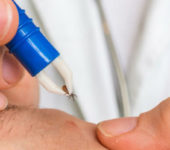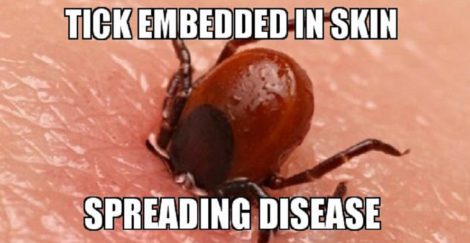
Posted On:
Category: Category:
Lyme Disease Awareness Month 2019
Lyme Disease Awareness Month 2019
May
Worldwide
This Event Begins In 86 Days Time
Supported by the Lyme Disease Foundation, Lyme Disease Awareness Month is a campaign which promotes preventative measures which can be taken against Lyme disease.
Lyme disease is an acute inflammatory disease caused by the bite of a tick infected with the bacteria, Borrelia burgdorferi; Lyme disease is spread through the bite of ticks which carry Borrelia burgdorferi bacterium.
In the United States there are two main species of tick which carry and spread Lyme disease. The deer tick or black legged tick(Ixodes scapularis) spreads the disease in the north central and eastern parts of the United States.
The western black legged tick (Ixodes pacifus) spreads Lyme disease on the west (Pacific) coast. Both species of ticks are found in wooded areas. The�life cycle�of the Ixodes tick is complex.

Symptoms
There are two types of symptoms of Lyme Disease: first and late symptoms. First symptoms are usually flu-like and include fatigue, tiredness, joint and muscle pain, and also a characteristic rash. Late symptoms can take much longer to develop: weeks, months or even years. Late symptoms may include fatigue, mental health issues, the condition arthritis and chronic encephalomyeltits.
Chronic encephalomyeltits is a progressive condition (symptoms become worse or more widespread), and include back pain, bladder problems, vertigo and weakness in the legs. Late Lyme disease can also cause brain, joint, and heart infection.
The Need For This Awareness Month
In the United States over the last few years, there has been a steady increase in the number of reported cases of Lyme disease. Lyme Disease Awareness Month educates both the young and old about Lyme Disease and how they can take steps to prevent it.
As both types of ticks which carry the Lyme disease virus live in wooded areas, people who visit these areas are encouraged to wear protective clothing around the ankles.
White or light clothing is recommended as it is easier to spot any ticks. Shirts and T-shirts should be tucked into your pants (trousers), and socks pulled up over the bottom of the pants. Using an insect repellent can also help prevent the ticks from getting on to you. Pets should also be checked. Before returning inside it is recommended to do a tick check first.
Tick Removal Lowers The Risk Of Lyme Disease
Carrying a tick removal kit is advised as they can be used to effectively remove ticks from body reducing the risk of disease transmission. Often the disease is transmitted when a tick is not removed properly.
The body breaks away with the head still buried in the skin; this causes the tick to regurgitate its contents into the persons body.
‘Do It Yourself’ tick kits should include an insect repellant, a pair of fine tweezers, an antiseptic and small vial.
Using the tweezers, remove the tick with the tips of the tweezers as close as possible to the skin around the ticks mouth parts. A gentle upward action is recommend by the Lyme Disease Foundation. By placing the tick in a vial with a blade of grass, the tick can be kept alive for testing.
So be aware that May 2019 is “tick” awareness month in the year of 2019.










